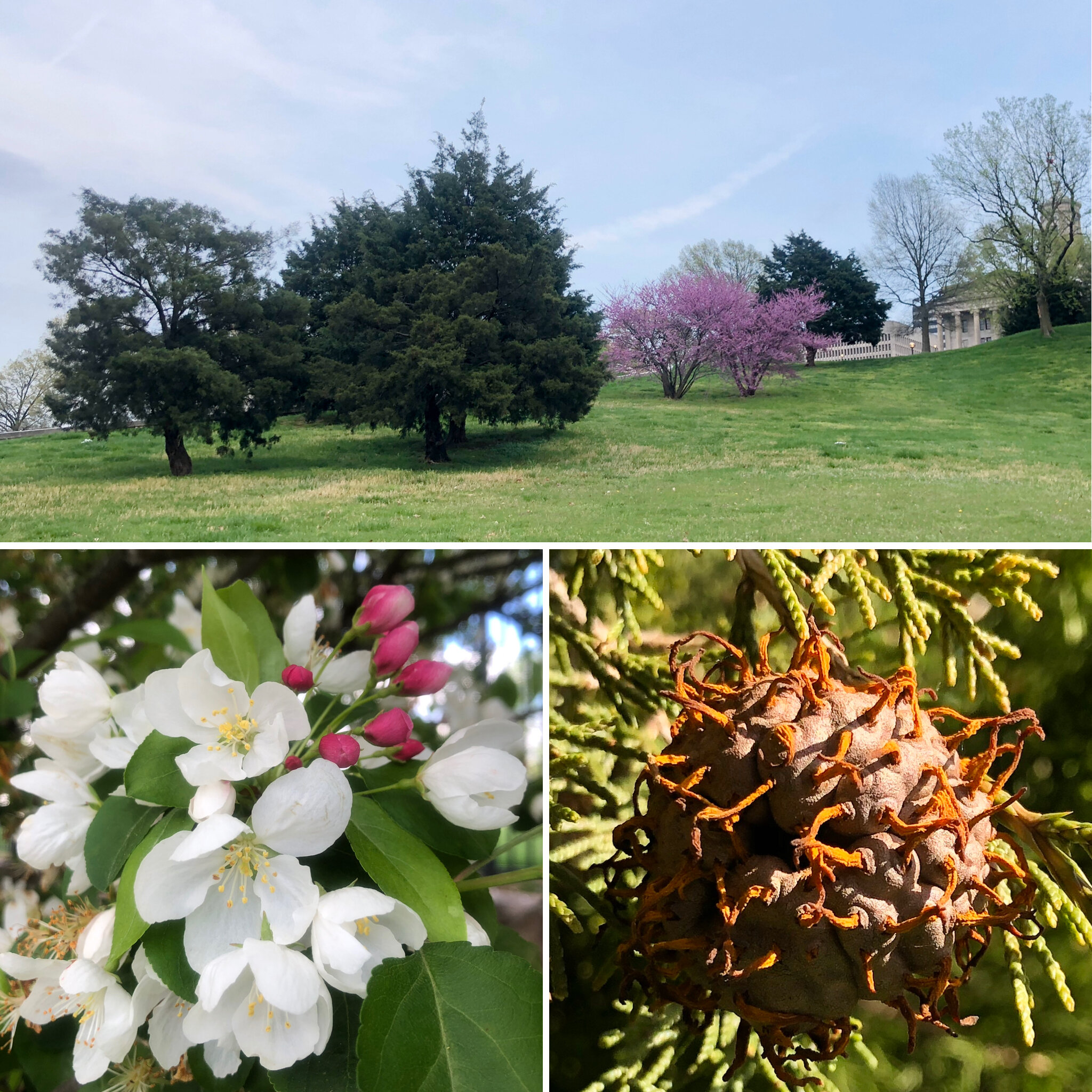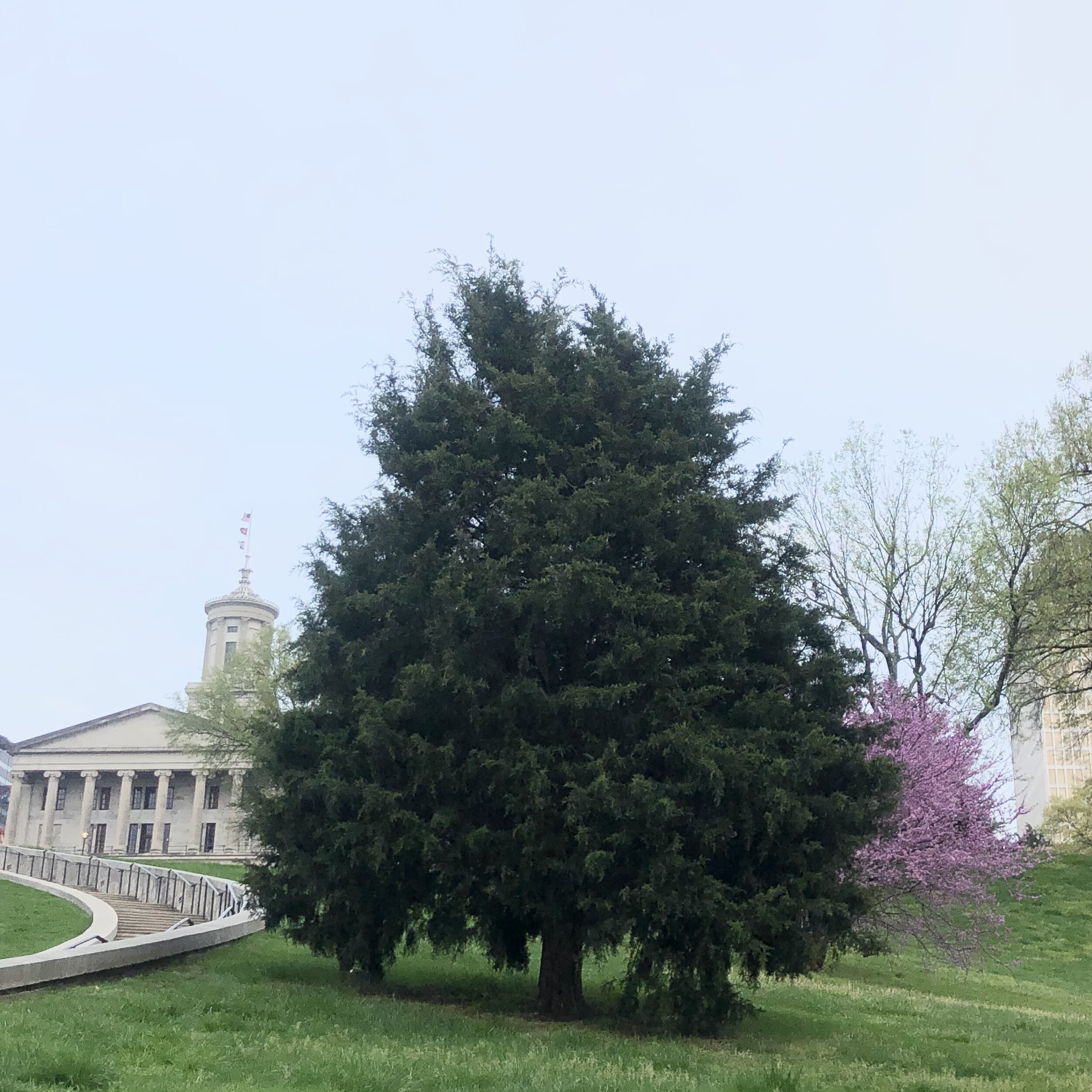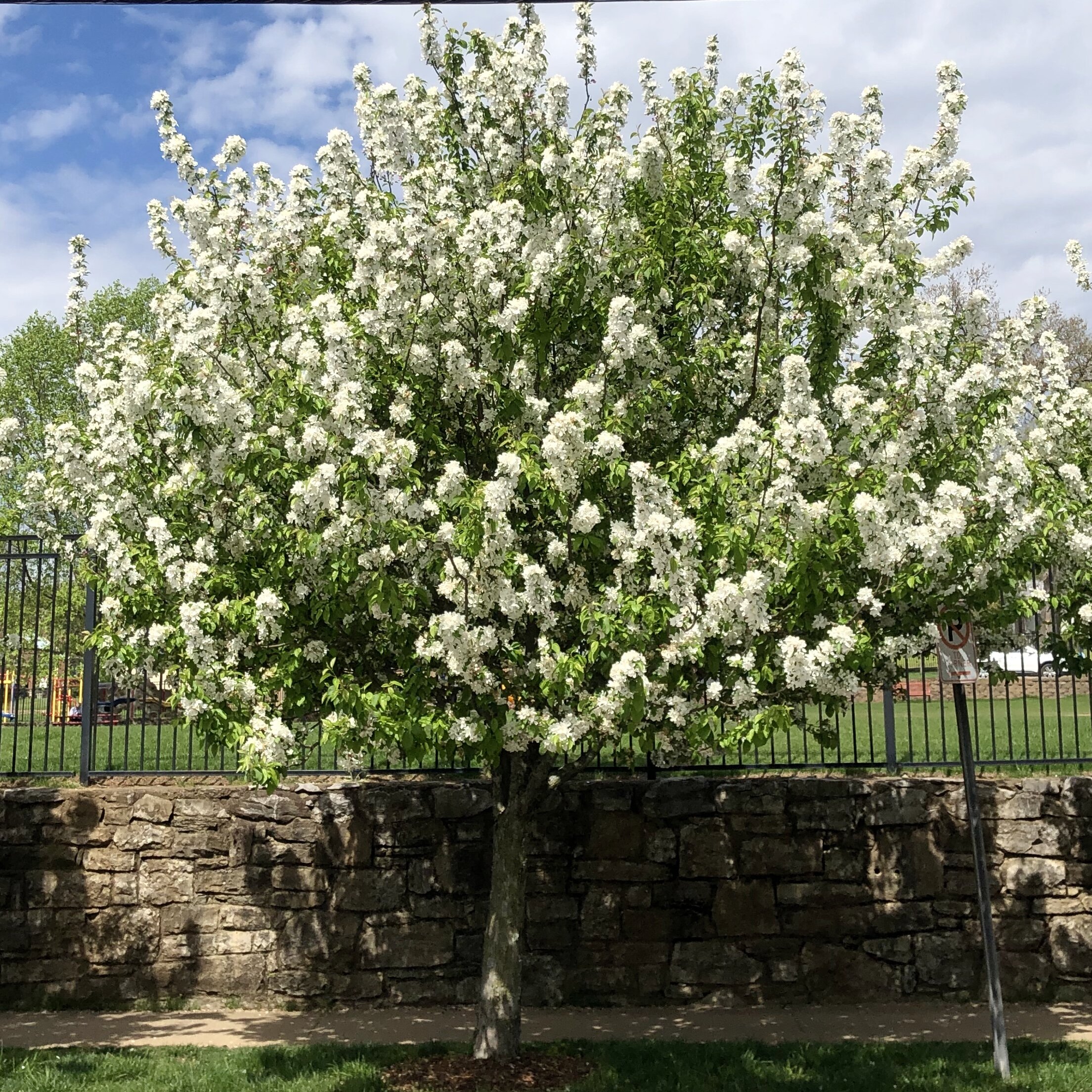



Yes, these three things are linked together, not just in name but biologically as well. But first things first… the cedar (aka redcedar or eastern redcedar) is not a cedar at all, at least not botanically speaking. True cedars are species in the genus Cedrus while the redcedar is actually a juniper, Juniperus virginiana. Redcedar is very common in Tennessee. Some experts even claim that it is the most abundant tree in the State! Based on my personal observations over the last 25 years, I have no reason to challenge this assertion. Redcedar has long been utilized for its wood to produce pencils, furniture, closest paneling, and fence posts, and for some, it serves as a Christmas tree.
Crabapple is a term used for varieties and species of Malus whose fruit are less than two inches in diameter, while those bearing larger fruit are apples. Fruit size aside, the common practice is to call those grown as a food crop “apples” and those grown as a landscape tree are called flowering crabapples. Regardless of name or purpose, they are all very closely related and have some degree of susceptibility to the same diseases. One of the most common diseases is cedar-apple rust.
Cedar-apple rust is definitely a curious fungus both in appearance and life cycle. After spending a year or more on a juniper, in mid-spring, cedar-apple rust galls begin growing elongated, sticky “horns” that ultimately resemble Medusa’s head. The horns bear spores that are dispersed into the wind and with any luck they will land on a nearby apple and crabapple. Those that do will germinate and colonize on the surface of leaves and fruit. As late summer arrives, cedar-apple rust spores take to the skies once again, this time in search of a juniper where the cycle starts all over. The galls are slightly smaller than a golf ball and they should be sporulating now.
As you shelter at home, take time to enjoy a walk, and see if you can spot a cedar-apple rust gall. If not hopefully you will see some beautiful crabapple blossoms on your stroll but don’t wait as they will fade fast under the warm spring sun. Send photos if you see any!

